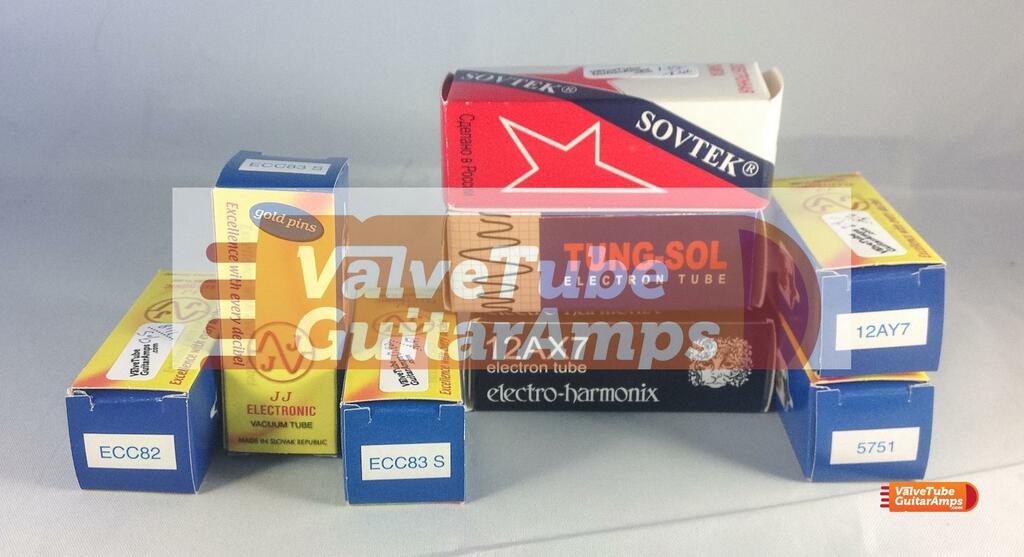Here is a guide to Pre-amp Valves
There are many types of pre-amps around all with the same pinout and if you are not a valve geek like me then how do you work out what is best for you?
I had a nice customer highlight this to me and I thought it would be useful to make some notes which may help you choose the right pre-amp valve especially for the V1 position in your guitar/bass amp.
This page is a permanent page on our Apple and Android app and will be updated as we learn more and get customer feedback on their findings.
When you change the valve in your amp the amp characteristics will change so you will need to try out different settings. For example, on valve will give a lot cleaner headroom but at the same setting the volume will be a bit lower, so you need to increase the volume setting slightly but overall you will have a cleaner sounding amp for a given volume ( maximum will be a bit lower though)
So enough of the bah blah and here is some notes on each type of valve. I have tried to separate the techy stuff and the musical aspects so just read the bit that helps you.
I have focused on the valves that I have in stock as I have heard most of them myself in amps such as Fender, Marshall, Mesa Boogie, Orange, Vox so I can relate personal experience rather than just what is written. There are a couple of exceptions to this and I will make this clear
The pin outs of many of the types are exactly the same although their characteristics are quite different. The most popular of this family is the ECC83. This is the European part number and the American pert number is the 12AX7.
The ECC83 family
 We have the ECC81 ECC82 ECC83 was introduced specifically for audio applications way back in 1954 to replace the earlier 6SL7 octal based valves. The 6SL7 type of valve has the same base as output valves such as the 6V6, 6L6, EL34 etc and were bulky, so the ECC8X family made a lower power, much smaller pre-amp valve. The ECC8x family had nine pins even thought it has a smaller base size (the base size is called B9A)
We have the ECC81 ECC82 ECC83 was introduced specifically for audio applications way back in 1954 to replace the earlier 6SL7 octal based valves. The 6SL7 type of valve has the same base as output valves such as the 6V6, 6L6, EL34 etc and were bulky, so the ECC8X family made a lower power, much smaller pre-amp valve. The ECC8x family had nine pins even thought it has a smaller base size (the base size is called B9A)
All are double triodes and this means there is effectively two valves in the one glass envelope. This means two stages of amplification in one valve.
The ECC83 is a high gain valve with a gain of about 100 . Anode current is nominally around 1mA
JJ Electronic ECC83S and Gold Pins Version
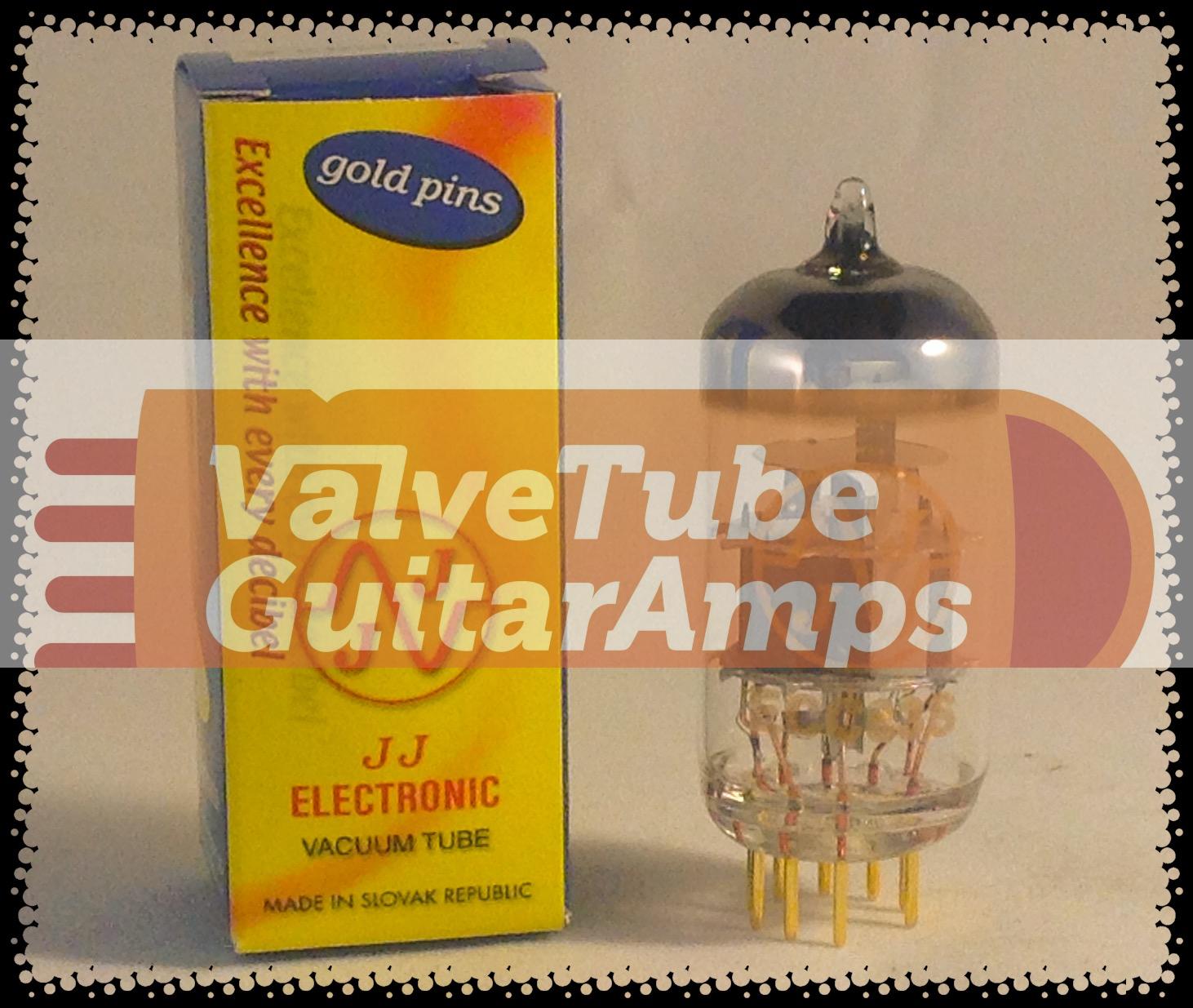 This has quite a different construction than most ECC83’s and they look very well made. They tend to have a clean sound and are low in noise. They are also very competitively priced. There is a Gold pin version and these I guess to be the pick of the best of JJ Production and are given the gold pins treatment. It is not the gold pins that make the difference its what I believe to be the best of JJ ECC*3 production so good on noise too.
This has quite a different construction than most ECC83’s and they look very well made. They tend to have a clean sound and are low in noise. They are also very competitively priced. There is a Gold pin version and these I guess to be the pick of the best of JJ Production and are given the gold pins treatment. It is not the gold pins that make the difference its what I believe to be the best of JJ ECC*3 production so good on noise too.
JJ Electronic 5751
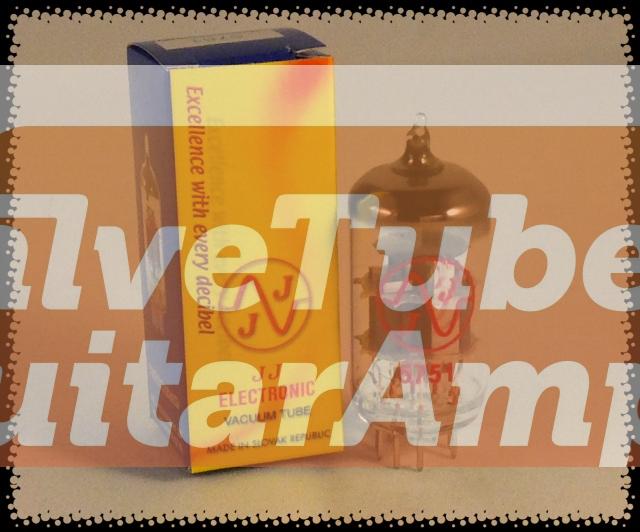 This again is a lower gain ECC83 and in the V1 position will push less signal towards the next stages so it will make the amp overall much cleaner with more headroom. Volume will go down a tad but if you are playing country then this will give a rich bright clean tone but the amp will be slightly quieter.
This again is a lower gain ECC83 and in the V1 position will push less signal towards the next stages so it will make the amp overall much cleaner with more headroom. Volume will go down a tad but if you are playing country then this will give a rich bright clean tone but the amp will be slightly quieter.
Sovtek 12AX7-WA
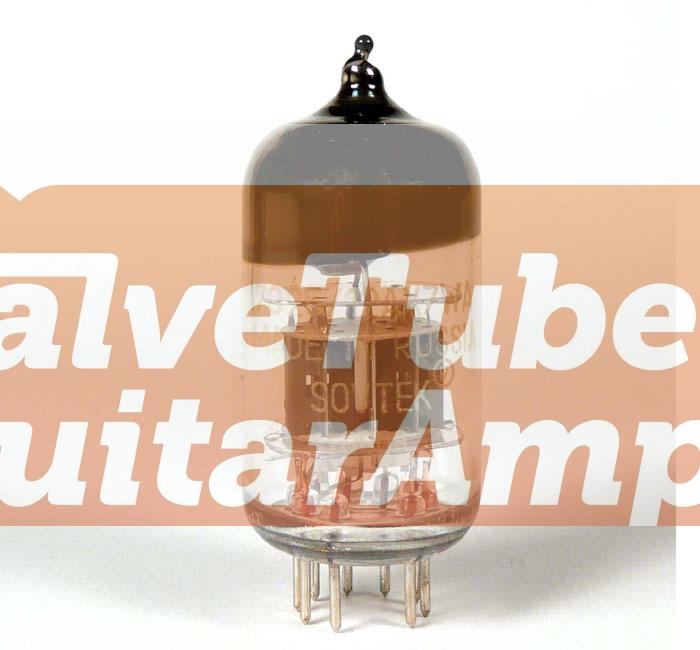 These are used in a lot of amps in production. They are very solid and last a good long time. Microphonics are low too. I can best describe them as “darker” than the JJ ECC83 and have a thicker sound which will work better with pedals. Of course this will vary from amp to amp.
These are used in a lot of amps in production. They are very solid and last a good long time. Microphonics are low too. I can best describe them as “darker” than the JJ ECC83 and have a thicker sound which will work better with pedals. Of course this will vary from amp to amp.
Sovtek 12AX7-WB
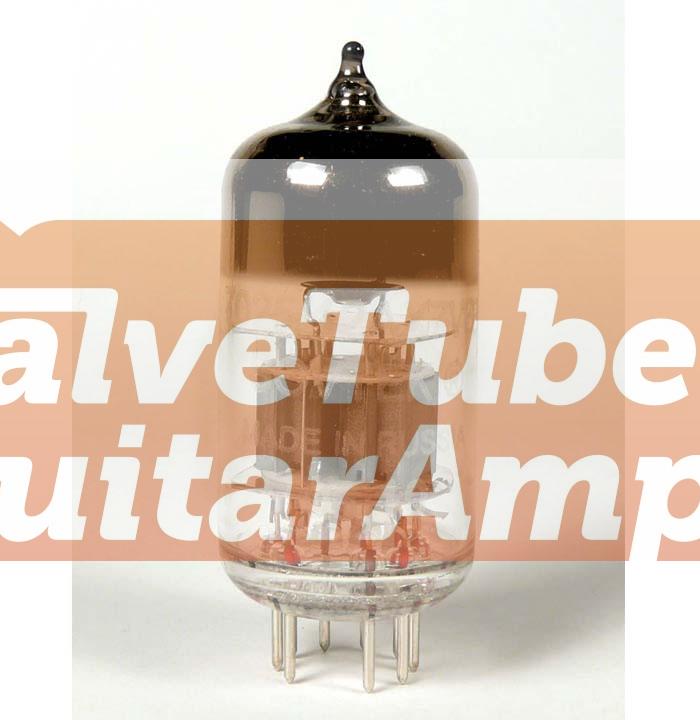 This variant tends to have lower anode current. In ones I have measured I have seen half the anode current of a nominal ECC83. This valve saturates faster so it is good where you want to get a good crunch sound out of the amp. In this case it is good in the V2 position as it gets driven by the first stage of amplification from the V1 valve.
This variant tends to have lower anode current. In ones I have measured I have seen half the anode current of a nominal ECC83. This valve saturates faster so it is good where you want to get a good crunch sound out of the amp. In this case it is good in the V2 position as it gets driven by the first stage of amplification from the V1 valve.
Sovtek 12AX7-LPS
This is a relatively new variant of the ECC83 type. It is quite a different construction to the other Sovtek types. the valves have larger plates inside and they have a very smooth tone across all frequency ranges. Just right for blues and Jazz in my mind. I have only read about how they sound and have not heard them myself. However, we will have them in stock from 6th October so I will get a chance to hear them. Having larger plates will make them more prone to microphonics so they are less suited to combo amps. we started stocking them in October 2016.
Electro Harmonix 12AX7
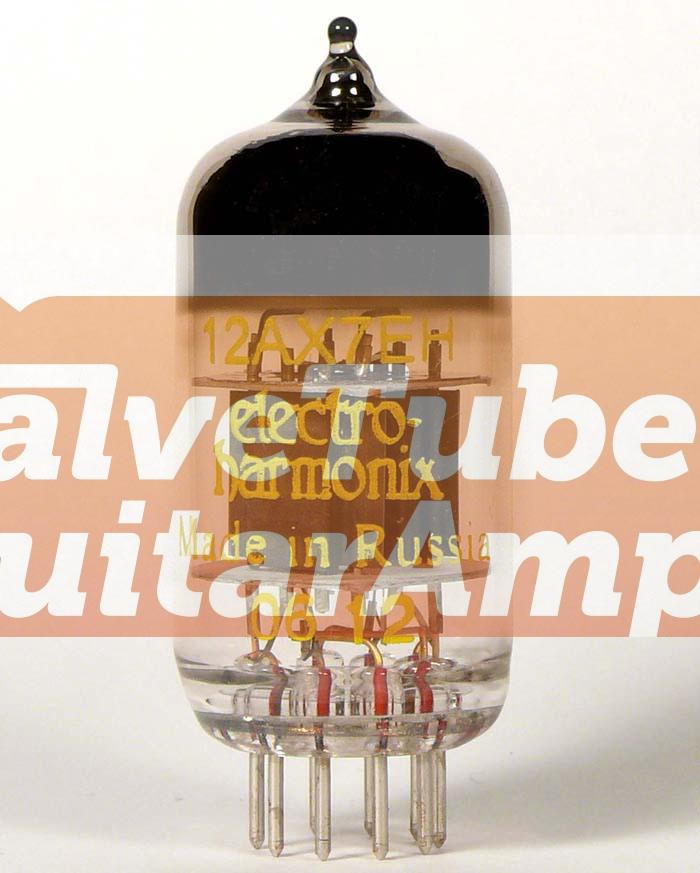 This is another Russian design but is slightly different to the Sovtek offerings. They have little microphonics and quality mid and bass tones. The are ideal for combo amps due to their short plates which minimise the microphonics. It is also good having low noise
This is another Russian design but is slightly different to the Sovtek offerings. They have little microphonics and quality mid and bass tones. The are ideal for combo amps due to their short plates which minimise the microphonics. It is also good having low noise
Tung Sol 12AX7
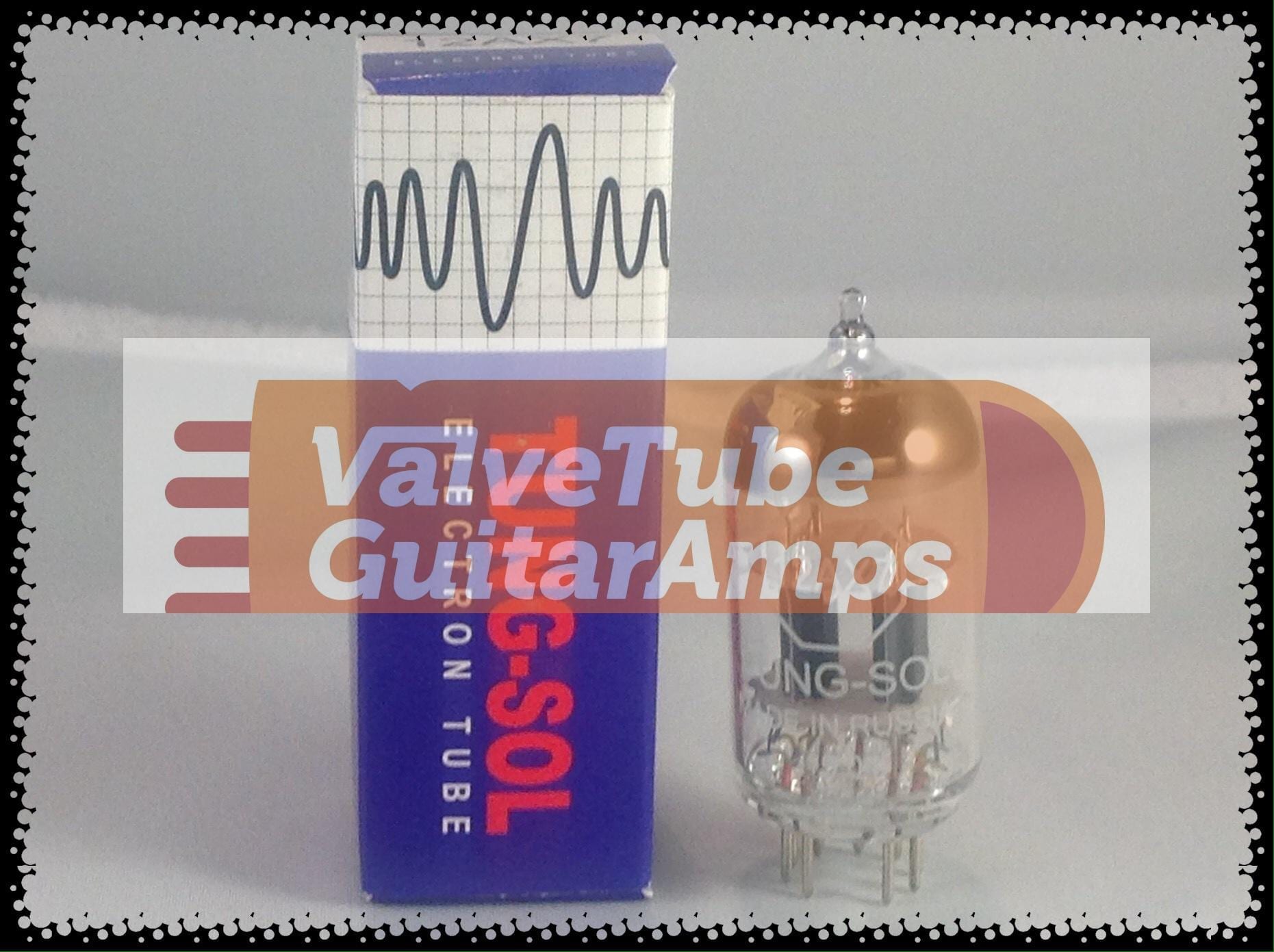 This is one of my favourites and I use them in my own amp. They are reliable with low noise and little microphonics,. They have good gain and give a nice rich bass and mid tone with less brilliance at the top end as compared to the JJ Electronic ECC83S. this valve provides good smooth breakup.
This is one of my favourites and I use them in my own amp. They are reliable with low noise and little microphonics,. They have good gain and give a nice rich bass and mid tone with less brilliance at the top end as compared to the JJ Electronic ECC83S. this valve provides good smooth breakup.
JJ Electronic ECC803S
 This is a long plate version of the ECC83 and has rich bass and over mid tones . Not for enthusiasts looking for crunch but more mellow tones. As it is long plated it is more prone to microphonics as it ages so not recommended for combo amps. This valve is slightly taller due to the long plates
This is a long plate version of the ECC83 and has rich bass and over mid tones . Not for enthusiasts looking for crunch but more mellow tones. As it is long plated it is more prone to microphonics as it ages so not recommended for combo amps. This valve is slightly taller due to the long plates
JJ Electronic 12AY7
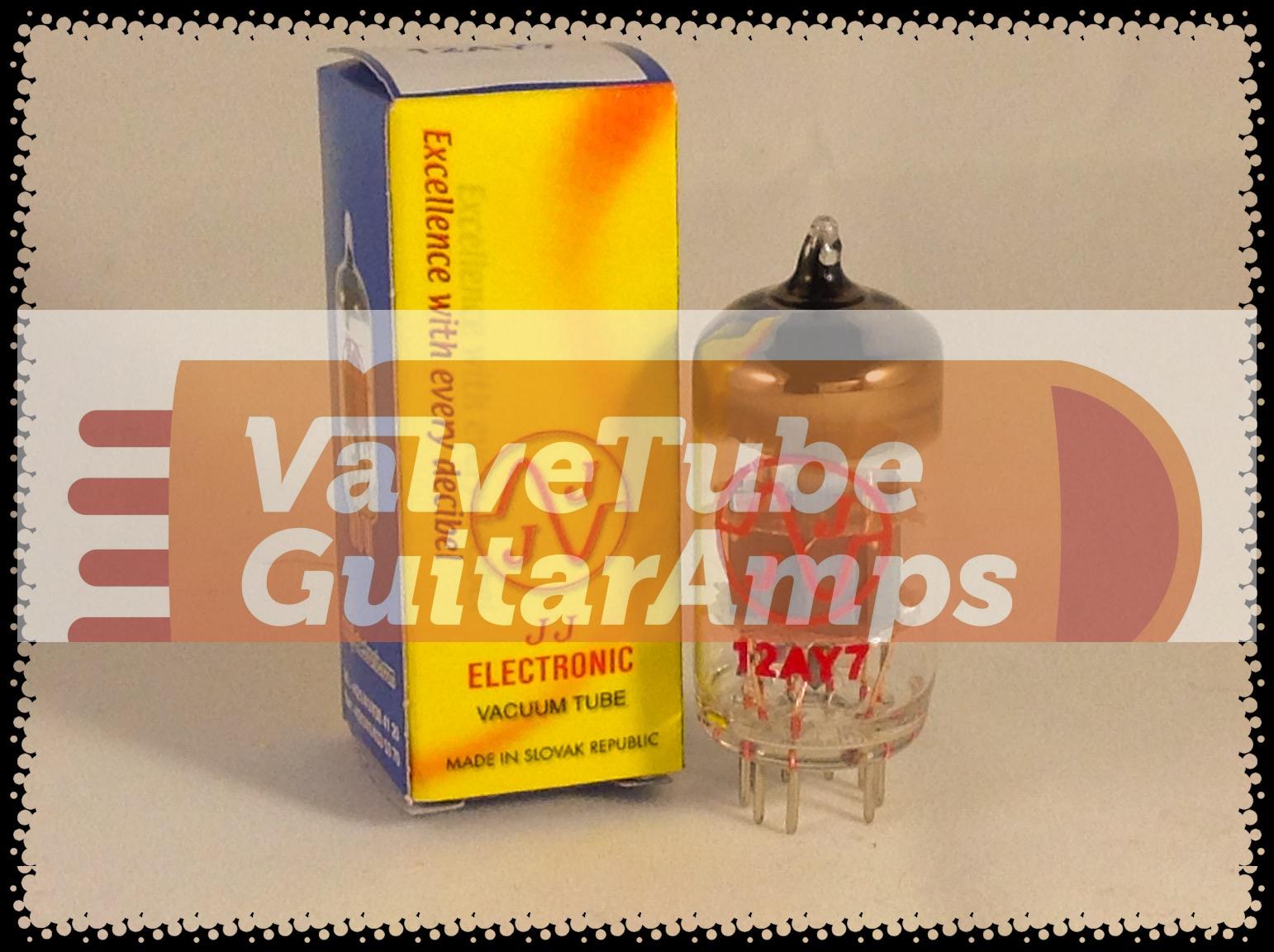 This is an ECC83 drop in replacement and has a bright sound . The 12AY7 has half the gain of the ECC83 so will result in a cleaner sounding amp with more headroom. It is very reminiscent of the 60’s sound and Rickenbackers. Many of the first Fender amps used this instead of an ECC83
This is an ECC83 drop in replacement and has a bright sound . The 12AY7 has half the gain of the ECC83 so will result in a cleaner sounding amp with more headroom. It is very reminiscent of the 60’s sound and Rickenbackers. Many of the first Fender amps used this instead of an ECC83
ECC81 and ECC82
There are some either pin compatible parts such as the ECC81 ( 12AT7) and the ECC82 ( 12AU7). I would not really recommend these for the v1 or V2 positions in your amp.
In the case of the ECC81 , it uses ten times the current than the ECC83 and is lower gain than the ECC83. The increased current will mean that the valve has much lower anode volts as the load resistor will drop more volts. It will distort more and might give you more crunch than any of the other options. I have tried it and I thought it sounded harsh and muffled
The ECC82 not only uses ten times the current of the ECC83 but also the bias voltages are different. It has only one fifth of the gain too. It is therefore difficult to predict what it will do in your amp . Not recommended for use in V1 and V2 positions that were designed for the ECC83 class of valve.
The Electro -Harmonix 12DW7
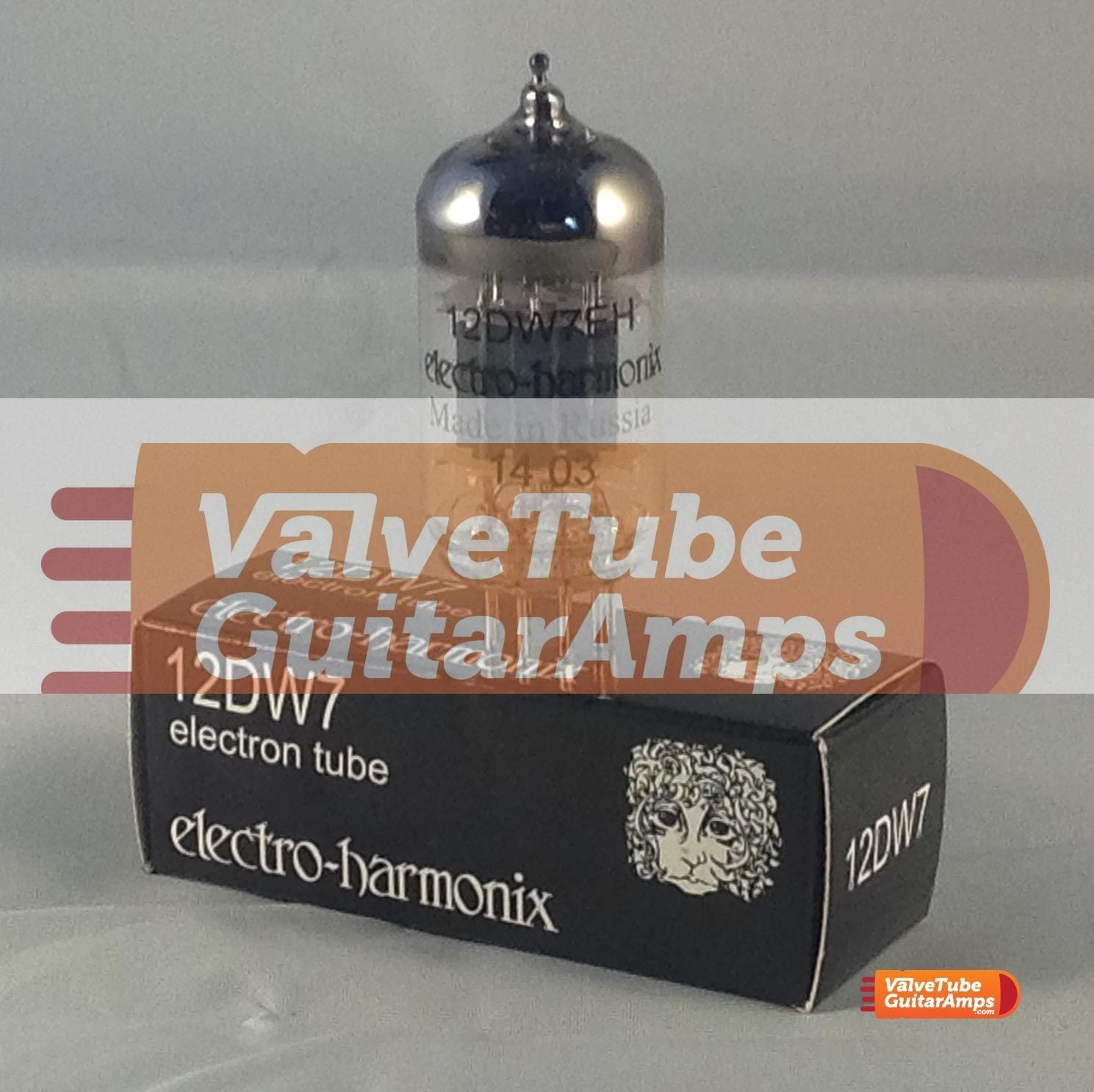 The Electro Harmonix 12DW7 is a bit of an unusual valve. it is basically one half of it is an ECC83 and the other half is an ECC82 so it is worth considering as a halfway house to trying an ECC82 in the V1 position.
The Electro Harmonix 12DW7 is a bit of an unusual valve. it is basically one half of it is an ECC83 and the other half is an ECC82 so it is worth considering as a halfway house to trying an ECC82 in the V1 position.
I hope this summary at least gives you some cause for thought and I will update this when I have new info.
You can visit all our pre-amp valves by clicking here
Note
We cannot take responsibility for your substitution of valves that are different of what was originally specified for your amp. This article is only a guide and of course results will differ with different amp models. Please remember that amps have high voltages and because it is switched off they can retain dangerous voltages for many hours. Please take every care when substituting valves

